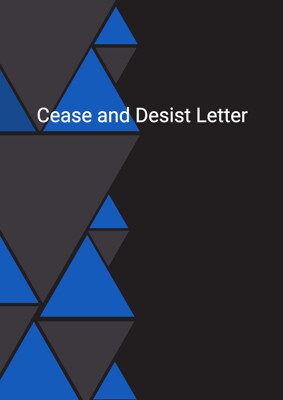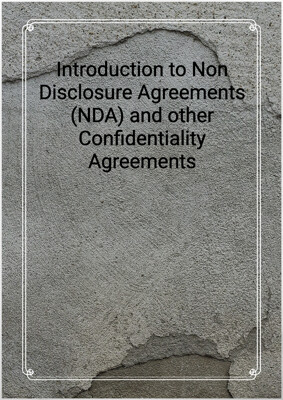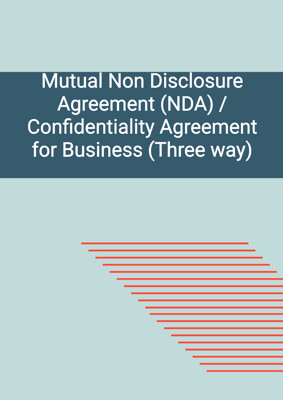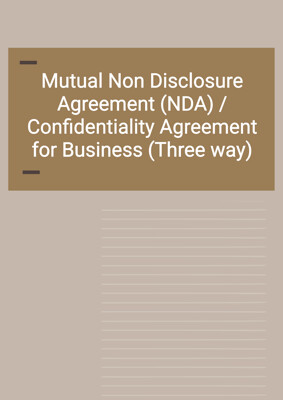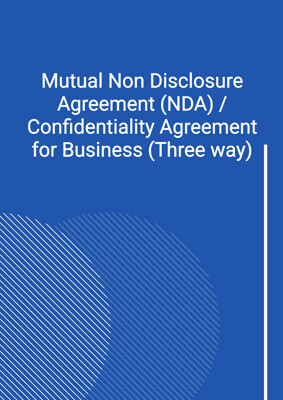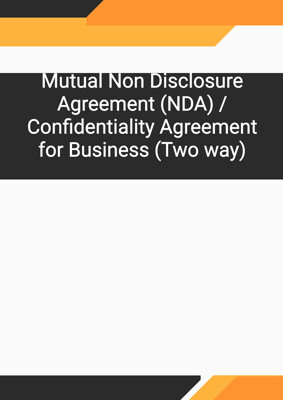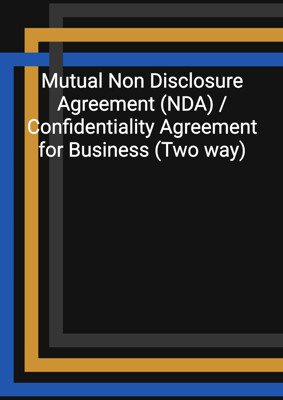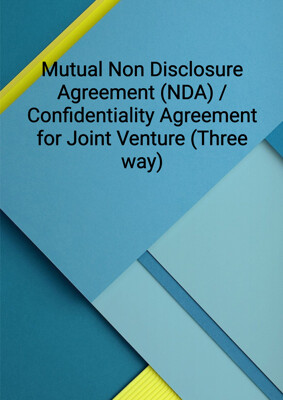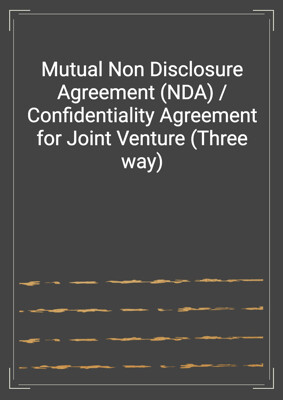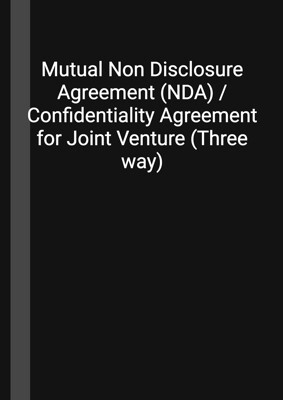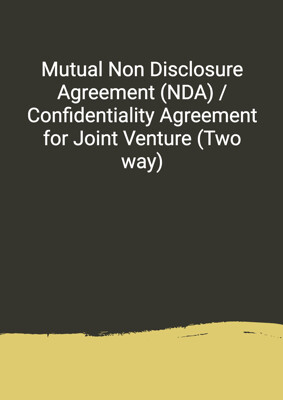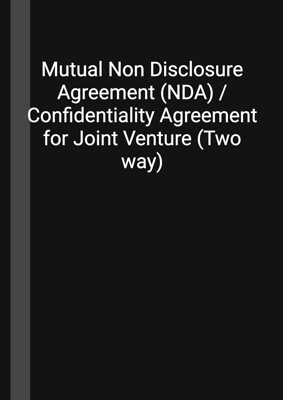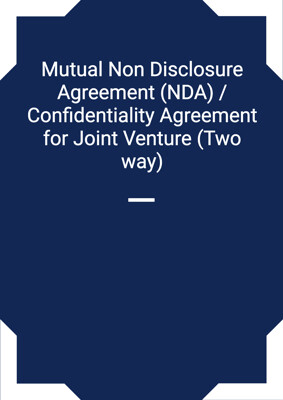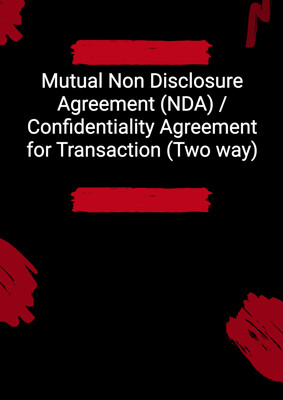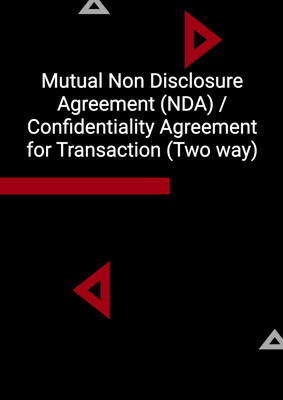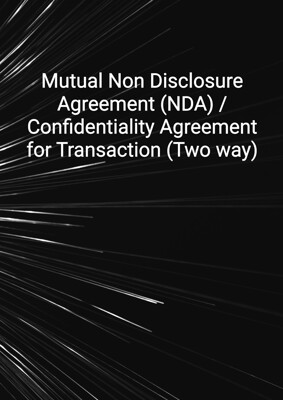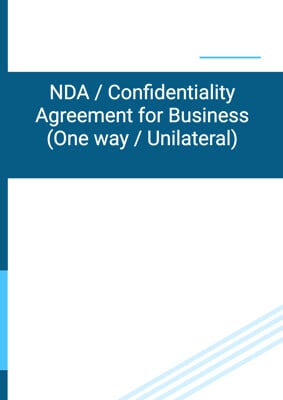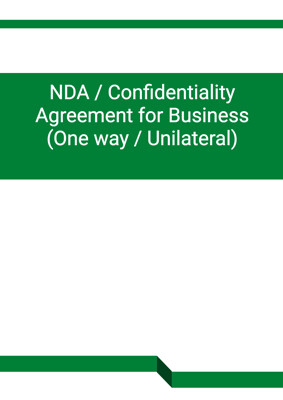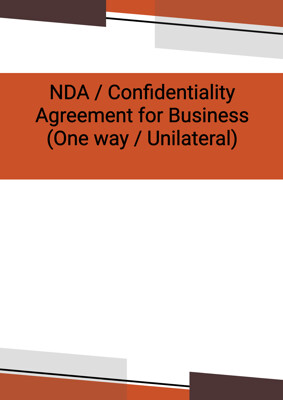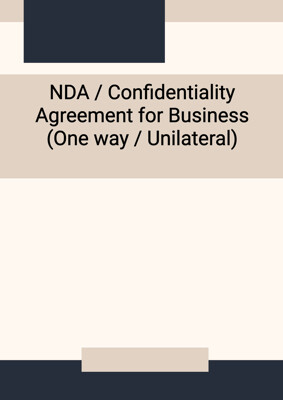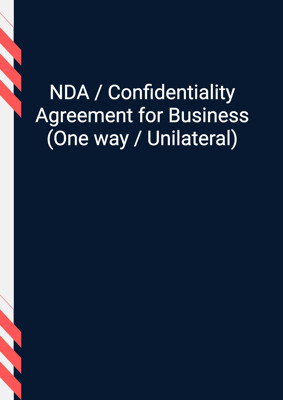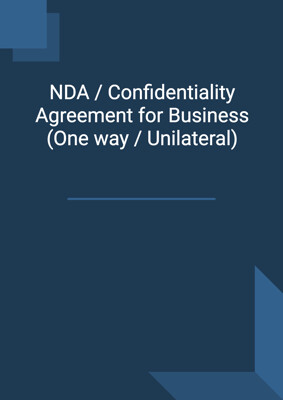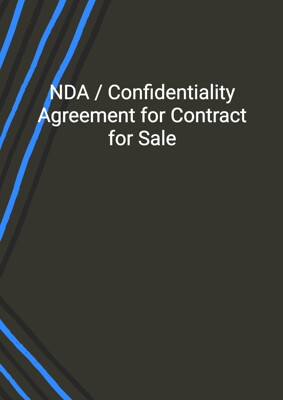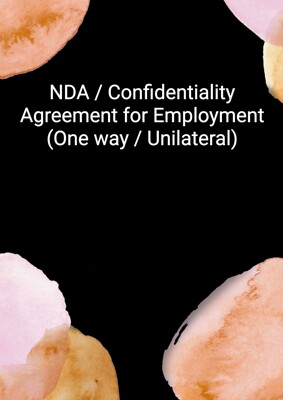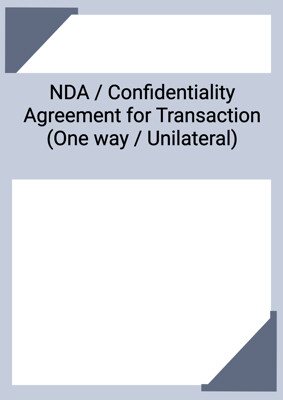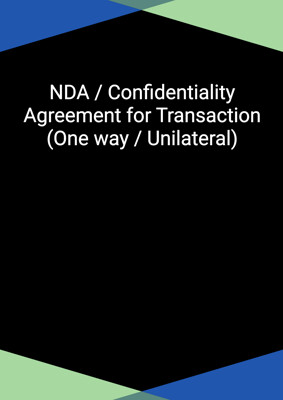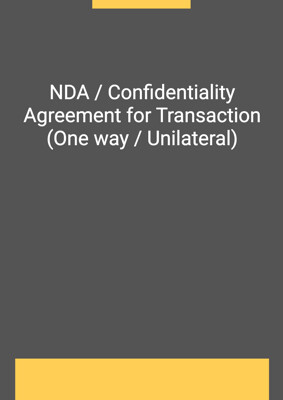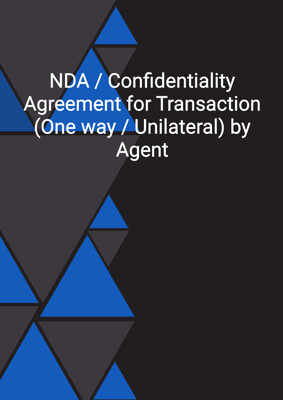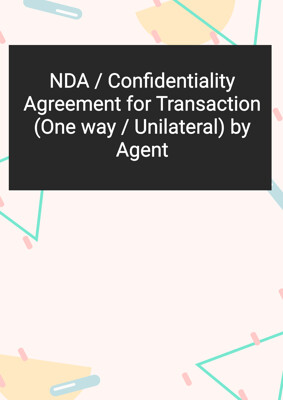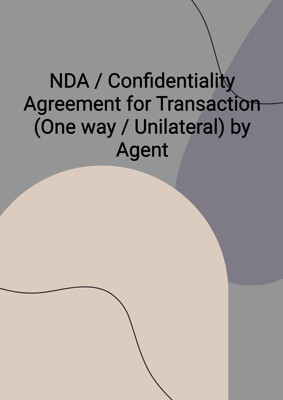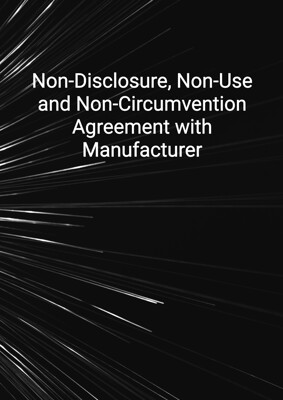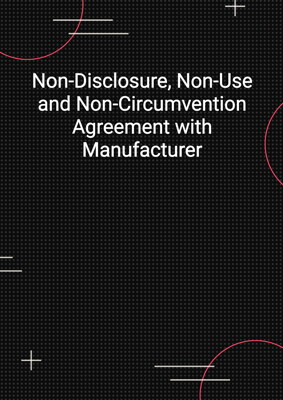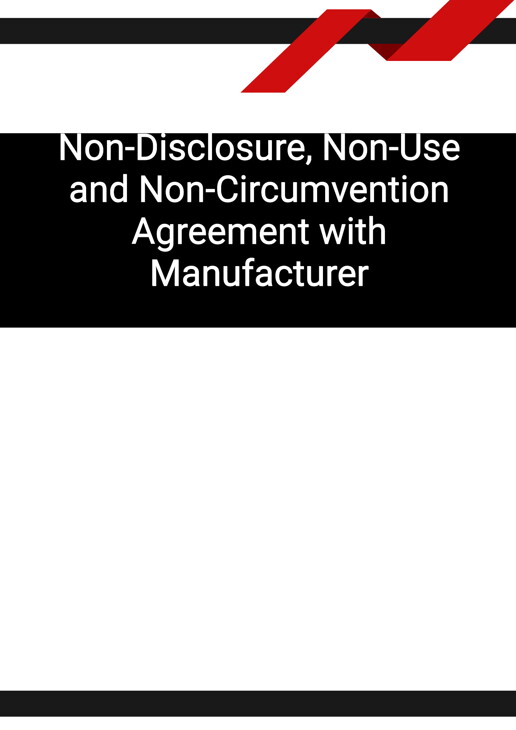
Non-Disclosure, Non-Use and Non-Circumvention Agreement with Manufacturer
Discloser / Provider / Customer
NNN Agreement for discussion of the business relationship with a manufacturer. It includes the Non Use, Non Disclosure and Non Circumvention clauses for protection. This is drafted in favour of the Discloser.
How to Tailor the Document for Your Need?
01
Create Document
Fill in the details of the parties. You can click the "Fill with Member’s Information" button to complete it with information saved to your account.
02
Fill Information
Please fill in any additional information by following the step-by-step guide on the left hand side of the preview document and click the "Next" button.
03
Get Document
When you are done, click the "Get Document" button and you can download the document in Word or PDF format.
04
Review Document
Please get all parties to review the document carefully and make any final modifications to ensure that the details are correct before signing the document.
Document Preview
Document Description
The document titled 'Non-Disclosure, Non-Use and Non-Circumvention Agreement with Manufacturer' is a legally binding agreement between two parties, referred to as the Discloser and the Disclosee. The purpose of this agreement is to protect the confidential information of the Discloser and prevent the Disclosee from disclosing, using, or circumventing the information for any unauthorized purposes.
The document begins with an introduction, stating the names and principal places of business of both parties. It highlights that the Discloser is the owner of certain confidential information and wishes to disclose it to the Disclosee for the purpose of evaluating a potential business relationship.
The agreement consists of several clauses that outline the obligations and responsibilities of both parties. Clause 2 focuses on non-disclosure, non-use, and non-circumvention. The Disclosee undertakes to maintain the confidentiality of the information, use it exclusively for the agreed purpose, and not disclose or use it for any other purpose without the prior written approval of the Discloser.
Clause 3 emphasizes the importance of confidentiality measures. The Disclosee is required to limit access to the information to approved representatives who have been authorized by the Discloser and are aware of their obligations of confidentiality. The Disclosee must also keep records of any documents or information received, apply appropriate security measures, and not remove any documents from its premises without approval.
The document includes provisions for exceptions to the non-disclosure obligations in Clause 4. The Disclosee may prove that certain information is already publicly available, previously known to them, or disclosed by a third party with the right to do so.
Clause 5 addresses the return of information. Upon request, the Disclosee must return or destroy all documents and materials containing the information and remove any stored information from computer systems. The obligations of confidentiality continue even after the completion of the purpose.
Other clauses cover disclaimers and warranties, confidentiality of the agreement itself, remedies for breach, waiver of rights, assignment of rights, entire agreement, intellectual property rights, governing law and jurisdiction, notices and service, and the exclusion of rights for third parties.
Overall, this agreement is crucial for protecting the confidential information of the Discloser and ensuring that the Disclosee uses the information solely for the agreed purpose and does not disclose or circumvent it for unauthorized purposes.
How to use this document?
To effectively use the 'Non-Disclosure, Non-Use and Non-Circumvention Agreement with Manufacturer', follow these steps:
1. Understand the purpose: Familiarize yourself with the purpose of the agreement, which is to protect the confidential information of the Discloser and evaluate a potential business relationship.
2. Identify the parties: Clearly identify the Discloser and the Disclosee by entering their names and principal places of business in the agreement.
3. Define confidential information: Determine the specific information that falls under the definition of 'information' in the agreement. This may include discoveries, ideas, designs, specifications, customer names, and other technical or commercial information.
4. Non-disclosure obligations: Ensure that the Disclosee understands and agrees to maintain the confidentiality of the information, using it exclusively for the agreed purpose and not disclosing it to any unauthorized parties.
5. Non-use obligations: Clarify that the Disclosee is prohibited from using the information to develop or sell similar products without the prior written approval of the Discloser. This includes avoiding direct or indirect competition with the Discloser.
6. Non-circumvention obligations: Make it clear that the Disclosee cannot interfere with or bypass the Discloser in any business opportunities related to the purpose of the agreement. This includes not contacting the Discloser's clients, suppliers, or business associates without permission.
7. Confidentiality measures: Establish measures to maintain the confidentiality of the information, such as limiting access to approved representatives, keeping records, and applying appropriate security measures.
8. Exceptions to non-disclosure: Understand the exceptions outlined in the agreement, which include information that is publicly available, previously known, or disclosed by a third party with the right to do so.
9. Return of information: Be prepared to return or destroy all documents and materials containing the information upon request, and remove any stored information from computer systems.
10. Seek legal advice: If necessary, consult with legal professionals to ensure that the agreement is properly understood and executed.
By following these steps, you can effectively use the 'Non-Disclosure, Non-Use and Non-Circumvention Agreement with Manufacturer' to protect confidential information and establish a secure business relationship.
